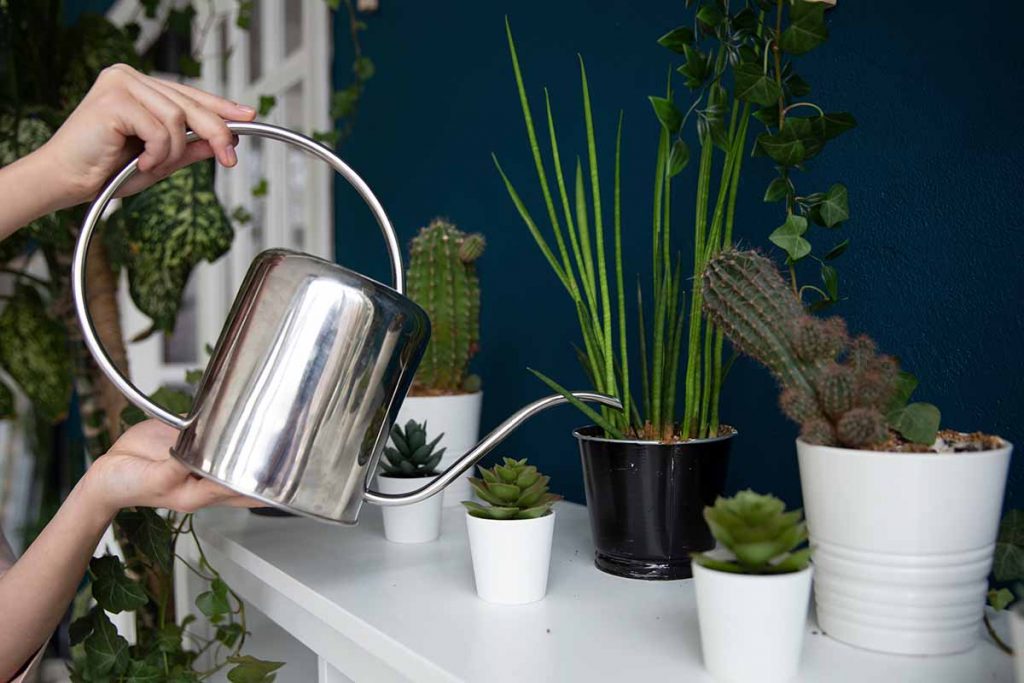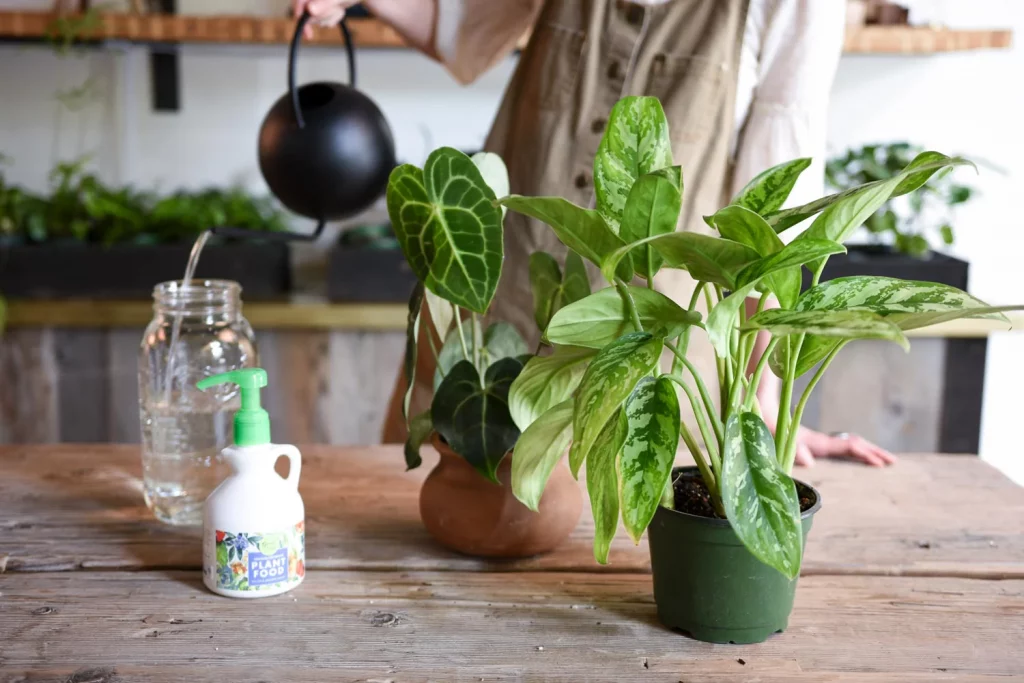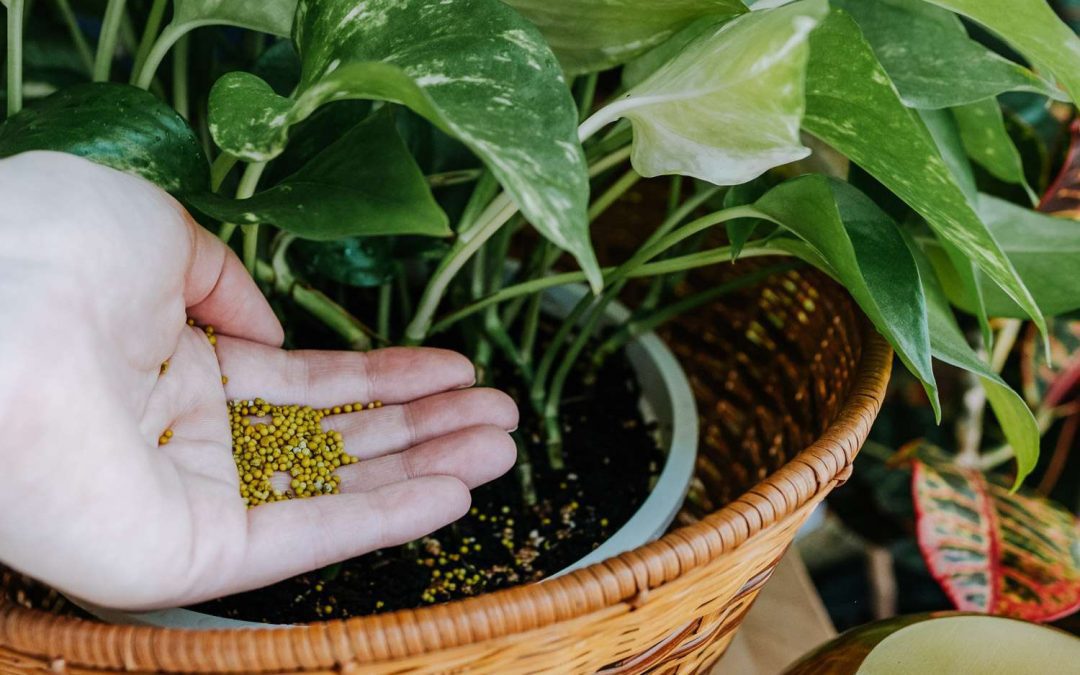Getting indoor plant fertilizers right is one of the fastest ways to see healthier leaves, stronger growth, and better flowering. Indoors, your plants rely on you for every drop of nutrition, so understanding how indoor plant fertilizers work makes care much easier.
If you’re not sure how often to feed your plants yet, it’s worth reading How Often to Fertilize Indoor Plants first, then using this guide to choose the right products and methods.
Contents
- 0.1 Why Indoor Plant Fertilizers Matter
- 0.2 Main Types of Indoor Plant Fertilizers
- 0.3 How to Choose the Right Indoor Plant Fertilizer
- 0.4 How to Use Indoor Plant Fertilizers Safely
- 0.5 Common Mistakes With Indoor Plant Fertilizers
- 0.6 FAQs About Indoor Plant Fertilizers
- 0.7 Final Thoughts on Indoor Plant Fertilizers
- 0.8 Related Articles
- 1 Learn How Balanced Fertilizers Maximise Plant Health
Why Indoor Plant Fertilizers Matter
In nature, plants constantly get fresh nutrients from decomposing leaves, rain, and soil life. Indoors, potting mix only contains a limited amount of food, and most of it gets used up within a few months.
Indoor plant fertilizers help to:
replace nutrients washed out by watering
support new leaves, roots, and flowers
keep foliage greener and growth more vigorous
reduce stress from pruning, repotting, or low light
Without regular feeding, many indoor plants become pale, slow-growing, and more prone to pests and diseases.

Main Types of Indoor Plant Fertilizers
Most indoor plant fertilizers fall into a few main categories. Knowing how they differ helps you pick what suits your plants and routine.
Liquid indoor plant fertilizers
Liquid fertilizers are diluted in water and applied when you water your plants. They’re quick-acting and easy to adjust.
Pros:
fast results
simple to use with normal watering
easy to change strength based on plant needs
Cons:
easier to overfeed if you don’t dilute correctly
need to remember to use them regularly
A good balanced liquid fertilizer for indoor plants is ideal for regular feeding during the growing season.
Slow-release fertilizers
Slow-release fertilizers come as pellets, spikes, or coated granules that break down over time. They release nutrients slowly with each watering.
Pros:
low-maintenance and long-lasting
good for busy people or large plant collections
Cons:
harder to adjust once applied
not ideal if you need to correct a problem quickly
Slow-release fertilizer granules for indoor containers can be especially helpful for big pots or plants you don’t want to feed every week.
Organic vs synthetic fertilizers
Organic fertilizers
Made from natural sources like compost, seaweed, fish, or plant extracts. They tend to be gentler and can support beneficial microbes in the soil.
Synthetic (mineral) fertilizers
Made from mineral salts. They provide very precise, predictable nutrient levels and are often used in liquid feeds and slow-release products.
Many indoor gardeners use a mix: a gentle organic base in the soil, topped up with a synthetic liquid feed during peak growth.
Specialised fertilizers
Some indoor plant fertilizers are tailored to specific plant types, such as:
foliage plant feeds (higher nitrogen for leaves)
bloom boosters (more phosphorus and potassium)
cactus and succulent feeds (lower nitrogen, balanced minerals)
orchid fertilizers (formulas designed for epiphytes)
Use these when you have a lot of the same type of plant, or when a plant has specific needs that a general feed doesn’t quite meet.
How to Choose the Right Indoor Plant Fertilizer
When you’re comparing indoor plant fertilizers, focus on what your plants actually need rather than just the brand name.
Ask yourself:
What kind of plants do I have most of? Foliage plants, flowering plants, cacti, or a mix?
How often do I realistically want to feed? Weekly, monthly, or just a few times per season?
Do I prefer quick control or low maintenance? Liquids give control; slow-release suits busy schedules.
Is my home bright and warm, or cool and low-light? Plants in lower light usually need less fertilizer overall.
For a mixed collection of houseplants, a balanced liquid indoor plant fertilizer used lightly through spring and summer is often enough, with slow-release products reserved for a few large, hungry plants.
According to this RHS guide to feeding houseplants, using a balanced fertilizer at the right strength and frequency is more important than chasing “strongest” formulas, and overfeeding is a far more common problem than underfeeding.
How to Use Indoor Plant Fertilizers Safely
Even the best indoor plant fertilizers can cause problems if used incorrectly. A few simple habits help keep your plants safe.
Always dilute as directed
Never assume “more feed = faster growth.” Follow the label and, if in doubt, start at half strength. You can always increase slightly if plants still look hungry.
Feed in the growing season
Most indoor plants grow actively in spring and summer. That’s the best time to use indoor plant fertilizers regularly. In autumn and winter, reduce feeding or stop completely unless you’re using strong grow lights and plants are still growing.
Avoid feeding stressed plants
Don’t rush to fertilize plants that are:
newly repotted
recovering from root rot
badly overwatered or underwatered
recently moved to a new location
Let them stabilise first, then reintroduce fertilizer gradually.
Water before feeding very dry soil
Bone-dry soil can cause fertilizer solution to run straight down the sides of the pot. Lightly moisten the soil first, then apply your indoor plant fertilizer mix.

Common Mistakes With Indoor Plant Fertilizers
A few mistakes show up again and again in indoor plant care.
Using too much fertilizer
Leads to brown tips, crispy leaves, and white crusts on the soil. Flush the pot with plain water to wash out excess salts and pause feeding for a while.
Feeding too often in low light
Plants in darker rooms grow slowly and need less nutrition. Overfeeding them can cause weak, soft growth that’s prone to pests.
Feeding dry or root-bound plants heavily
If roots are very crowded or soil is compacted, strong feeds can burn them. Repot first, then feed lightly.
Ignoring product instructions
Each indoor plant fertilizer has its own concentration and schedule. Always read the label, especially when switching products.
FAQs About Indoor Plant Fertilizers
1. How often should I use indoor plant fertilizers?
Most indoor plants only need feeding every 2–4 weeks in spring and summer. In autumn and winter, reduce feeding or stop unless plants are actively growing under strong light.
2. Can I use outdoor plant fertilizer on indoor plants?
Sometimes, but you’ll need to dilute it carefully. Indoor plants are usually in smaller pots and can be more sensitive, so it’s safer to use products labelled for houseplants.
3. What’s the best indoor plant fertilizer for beginners?
A balanced liquid indoor plant fertilizer is usually the easiest. It’s flexible, easy to dilute, and works for most common houseplants.
4. Do I need fertilizer for new potting soil?
Fresh potting mix often contains some fertilizer that lasts a few weeks. After that, you’ll need to start a light feeding routine to keep plants growing well.
5. How can I tell if I’m overfertilizing my indoor plants?
Signs include brown leaf tips, yellowing, slow or distorted growth, and a white crust on the soil. Flush the soil with plain water and pause feeding if you notice these.
Final Thoughts on Indoor Plant Fertilizers
Indoor plant fertilizers don’t have to be complicated or intimidating. Once you understand the main types, how they work, and how often to use them, feeding simply becomes part of your routine. Start with a gentle, balanced fertilizer, apply it mainly during the growing season, and adjust based on how your plants respond.
With the right indoor plant fertilizers and a bit of consistency, your houseplants will reward you with richer colour, stronger growth, and far fewer problems over time.
Related Articles
BOOST YOUR FERTILIZER EFFICIENCY
Learn How Balanced Fertilizers Maximise Plant Health
Once you understand the basics of indoor plant fertilizers, choosing the right nutrient balance can make a huge difference. Our Balanced Fertilizers guide explains N-P-K ratios, when to use them, and how they support strong, even growth across your garden.

